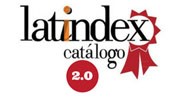Actualización de las Escalas Pronósticas para el Manejo de la Hemorragia Digestiva Alta No Varicosa
DOI:
https://doi.org/10.69890/hallazgos21.v3i3.320Palabras clave:
Hemorragia gastrointestinal; factores de riesgo; mortalidad; endoscopía gastrointestinal; endoscopía del sistema digestivo.Resumen
Fundamento: La existencia de un elevado número de pacientes con complicaciones debido a episodios de hemorragia digestiva alta y la posibilidad de identificarlo según una escala pronóstica. El objetivo de esta revisión fue estudiar las diversas escalas que existen para clasificar a los pacientes en grupos de riesgo alto o bajo con hemorragia digestiva alta no varicosa. Para ello se realizó una búsqueda en la base Medline entre otras de la literatura original donde se publicaron estás escalas y aquellos donde se validaron de forma actualizada, preferentemente metaanálisis y estudios aleatorios controlados. Las escalas más conocidas y validadas fueron la de Rockall y la de Glasgow-Blatchford, la primera debe emplear la panendoscopía de urgencia, lo que es una desventaja; y la segunda tiene un alto poder discriminatorio para la recurrencia de sangrado y obvia la endoscopía de urgencia. Todas las escalas clasifican a los pacientes en grupos de riesgo alto y bajo, los de alto riesgo requiere cuidados intensivos, mientras que los de riesgo bajo pueden ser dados de alta el mismo día. Existen otras escalas más sencillas, fáciles de recordar y que obvian la realización de la endoscopía. Se concluye que todo paciente con hemorragia digestiva alta no varicosa debe ser clasificado por medio de una escala pronóstica en grupos de riesgo para su mejor evaluación, lo que permite disminuir los resultados adversos durante el episodio de sangrado.
Citas
Adamopoulos, A.B., Baibas, N.M., Efstathiou, S.P., Tsioulos, D.I., Mitromaras, A.G., Tsami, A.A., & Mountokalakis, T.D. (2003). Differentiation between patients with acute upper gastrointestinal bleeding who need early urgent upper gastrointestinal endoscopy and those who do not. A Prospective Study. European Journal of Gastroenterology and Hepatology, 15 (4), 381–387.
Atkinson, R.J., & Hurlstone, D.P. (2008). Usefulness of prognostic indices in upper gastrointestinal bleeding. Best Practice & Research Clinical Gastroenterology,22 (2), 233-242. doi:10.1016/j.bpg.2007.11.004.
Biecker, E. (2015).Diagnosis and therapy of non-variceal upper gastrointestinal bleeding. World Journal of Gastrointestinal Pharmacology and Therapeutics. 6(4), 172-182. doi:10.4292/wjgpt.v6.i4.172.
Blatchford, O., Murray, W.R., & Blatchford, M. (2000). A risk score to predict need for treatment for uppergastrointestinal Haemorrhage. Lancet, 356.1318–21.doi:10.1111/j.1440-1746.2006. 04762.x.
Budimir, I., Stojsavljević, S., & Baršić, N. (2017). Scoring systems for peptic ulcer bleeding: Which one to use? World Journal of Gastroenterology. 23(41), 7450-7458. doi:10.3748/wjg.v23.i41.7450.
Cameron, E.A., Pratap, J.N., Sims, T.J., Inman, S., Boyd, D., Ward, M., & Middleton, S.J. (2002). Three-year prospective validation of a pre-endoscopic risk stratification in patients with acute upper-gastrointestinal haemorrhage. Eur J Gastroenterol Hepatol. 14, 497-501. [PMID: 11984147].
Camus, M., Jensen, D.M., & Ohning, G.V. (2016). Comparison of Three Risk Scores to Predict Outcomes of Severe Lower Gastrointestinal Bleeding. Journal of clinical gastroenterology, 50(1), 52-58. doi:10.1097/MCG.0000000000000286.
Camus, M., Khungar, V., & Jensen, D.M. (2016). Origin, Clinical Characteristics and 30-Day Outcomes of Severe Hematochezia in Cirrhotics and Non-cirrhotics. Digestive Diseases and Sciences, 61(9),2732-2740. doi:10.1007/s10620-016-4198-y.
Choe, J.W., Kim, S.Y., & Hyun, J.J. (2017). Is the AIMS 65 Score Useful in Prepdicting Clinical Outcomes in Korean Patients with Variceal and Nonvariceal Upper Gastrointestinal Bleeding? Gut and Liver, 11(6), 813-820. doi:10.5009/gnl16607.
Copeland, G., Jones, D., & Walters, M. (1991).POSSUM: A scoring system for surgical audit. Br J Surg., 78, 356–60.
Dakik, H.K., Srygley, F.D., Chiu, S.T., Chow, S.C., & Fisher, D.A. (2017). Clinical Performance of Prediction Rules and Nasogastric Lavage for the Evaluation of Upper Gastrointestinal Bleeding: A Retrospective Observational Study. Gastroenterology Research and Practice, 3 (1), 76- 97. doi:10.1155/2017/3171697.
Das, A., Ben-Menachem,T., & Cooper, G.S. (2003). Prediction of outcome in acute lower gastrointestinal haemorrhage based on an artificial neural network: internal and external validation of a predictive model. Lancet, 362, 1261-6.
Ebrahimi Bakhtavar, H., Morteza Bagi, H.R., Rahmani, F., Shahsavarinia, K., & Ettehadi, A. (2017). Clinical Scoring Systems in Predicting the Outcome of Acute Upper Gastrointestinal Bleeding; a Narrative Review . Emergency, 5(1), e36.
Forrest, J.A., Finlayson, N.D., & Shearman, D.J. (1974). Endoscopy in gastrointestinal bleeding. Lancet ,2, 394–397.
Gerson, L.B., Fidler, J.L., Cave, D.R., & Leighton, J.A. (2015).ACG Clinical Guideline: Diagnosis and Management of Small Bowel Bleeding. Am J Gastroenterol,110,1265-87.
Gómez Zuleta, M.A., Fernando Pineda, L., Ibáñez, M., Otero, W., & Abeláez Méndez, V.H. (2006). Escala UNAL de predicción para identificar pacientes con hemorragia digestiva alta que necesitan endoscopía urgente. Acta Med Colomb, 31, 389-399.
Hay, J.A., Lyubashevsky, E., Elashoff, J., Maldonado, L., Weingarten, S.R., & Ellrodt, A.G. (1996).Upper gastrointestinal hemorrhage clinical-guideline determining the optimal hospital length of stay. Am J Med,100,313-322[PMID:8629677].
Hay, J.A., Maldonado, L., Weingarten, S.R., & Ellrodt, A.G. (1997). Prospective evaluation of a clinical guideline recommending hospital length of stay in upper gastrointestinal tract hemorrhage. JAMA, December 24/31, 278, 2151-2156.
Holster, I.L., & Kuipers, E.J. (2011). Update on the endoscopic management of peptic ulcer bleeding. Curr Gastroenterol Rep, 13: 525-531 [PMID: 21918857 DOI: 10.1007/s11894-011-0223-7].
Jairath, V., Martel, M., Logan, R.F., & Barkun, A.N. (2012). Why do mortality rates for nonvariceal upper gastrointestinal bleeding differ around the world? A systematic review of cohort studies. Canadian Journal of Gastroenterology, 26(8),537-543.
Johnston, M.R., Murray, I.A., & Schultz, M. (2015). Does Preendoscopy Rockall Score Safely Identify Low Risk Patients following Upper Gastrointestinal Haemorrhage? Gastroenterology Research and Practice, 4 (1). doi:10.1155/2015/410702.
Knaus, W.A., Draper, E.A., & Wagner, D.P. (1985). APACHE II: a severity of disease classification system. Crit Care Med, 13, 818–829.
Kollef, M.H., O'Brien, J.D., Zuckerman, G.R., & Shannon W. (1997). BLEED: a classification tool to predict outcomes in patients with acute upper and lower gastrointestinal hemorrhage. Crit Care Med., 25,1125-1132.
Laeeq, S.M., Tasneem, A.A., Hanif, F.M., Luck, N.H., Mandhwani, R., & Wadhva, R.(2017). Upper Gastrointestinal Bleeding in Patients with End Stage Renal Disease: Causes, Characteristics and Factors Associated with Need for Endoscopic Therapeutic Intervention. Journal of Translational Internal Medicine, 5(2):106-111. doi:10.1515/jtim-2017-0019.
Laine, L., & Jensen, D.M. (2012).Management of patients with ulcer bleeding. Am J Gastroenterol, 107, 345-360. DOI: 10.1038/ajg.2011.480.
Laine, L., & Peterson, W.L. (1994). Bleeding peptic ulcer. N Engl J Med, 331, 717-727 [PMID: 8058080 DOI: 10.1056/nejm199409153311107].
Le Gall, J.R., Lemeshow, S., & Saulnier, F. (1993). A new simplified acute physiology score (SAPSII) based on a European/North American multicentre study. JAMA, 24, 2957–2963.
Lee, Y.J., Min, B.R., & Kim, E.S. (2016). Predictive factors of mortality within 30 days in patients with nonvariceal upper gastrointestinal bleeding. The Korean Journal of Internal Medicine. 31(1), 54-64. doi:10.3904/kjim.2016.31.1.54.
Lin, H.J., Perng, C.L., Lee, F.Y., Lee, C.H., & Lee, S.D. (1994). Clinical courses and predictors for rebleeding in patients with peptic ulcers and non-bleeding visible vessels: a prospective study. Gut, 35, 1389-1393 [PMID: 7959193].
Lochhead, P., Chan, A.T., Giovannucci, E., Fuchs, C.S., Wu, K., Nishihara, R., O’Brien, M., & Ogino, S. (2014). Progress and opportunities in molecular pathological epidemiology of colorectal premalignant lesions. Am J Gastroenterol, 109, 1205-1214 [PMID: 24935274 DOI: 10.1038/ajg.2014.153].
Marmo, R., Koch, M., Cipolletta, L., Capurso, L., Grossi, E., Cestari, R., Bianco, M.A., … & Rotondano G. (2010). Predicting mortality in non-variceal upper gastrointestinal bleeders: validation of the Italian PNED Score and Prospective Comparison with the Rockall Score. Am J Gastroenterol, 105, 1284-1291 [PMID: 20051943 DOI: 10.1038/ajg.2009.687].
Martínez-Cara, J.G., Jiménez-Rosales, R., Úbeda-Muñoz, M., de Hierro, M.L., de Teresa, J., & Redondo-Cerezo, E. (2016). Comparison of AIMS65, Glasgow–Blatchford score, and Rockall score in a European series of patients with upper gastrointestinal bleeding: performance when predicting in-hospital and delayed mortality. United European Gastroenterology Journal, 4(3), 371-379. doi:10.1177/2050640615604779.
Mohammed, N., Rehman, A., Swinscoe, M.T., Mundre, P., & Rembacken, B. (2016). Outcomes of acute upper gastrointestinal bleeding in relation to timing of endoscopy and the experience of endoscopist: a tertiary center experience. Endoscopy International Open, 4(3), E282-E286. doi:10.1055/s-0042-100193.
Mokhtare, M., Bozorgi, V., & Agah, S. (2016). Comparison of Glasgow-Blatchford score and full Rockall score systems to predict clinical outcomes in patients with upper gastrointestinal bleeding. Clinical and Experimental Gastroenterology, 9, 337-343. doi:10.2147/CEG.S114860.
Monteiro, S., Gonçalves, T.C., Magalhães, J., & Cotter, J. (2016). Upper gastrointestinal bleeding risk scores: Who, when and why? World Journal of Gastrointestinal Pathophysiology. 7(1), 86-96. doi:10.4291/wjgp.v7.i1.86.
Morgan, A.G., McAdam, W.A.F., Walmsley, G.L., Jessop, A., Horrocks, J.C., & De Dombal, F.T.(1997). Clinical findings, early endoscopy and multivariate analysis in patients bleeding from the upper gastrointestinal tract. Br Med J., 2,237-240.
Ogino, S., Lochhead, P., Chan, A.T., Nishihara, R., Cho, E., Wolpin, B.M., Meyerhardt, J.A., Meissner, A., & Schernhammer, E.S., Fuchs, C.S., Giovannucci, E. (2013). Molecular pathological epidemiology of epigenetics: emerging integrative science to analyze environment, host, and disease. Mod Pathol, 26, 465-484 [PMID: 23307060 DOI: 10.1038/modpathol.2012.214].
Palmer, A.J., Moroni, F., & Mcleish, S. (2016). Risk assessment in acute non-variceal upper GI bleeding: the AIMS65 score in comparison with the Glasgow–Blatchford score in a Scottish population. Frontline Gastroenterology, 7(2), 90-96. doi:10.1136/flgastro-2015-100594.
Quach, D.T., Dao, N.H., & Dinh, M.C. (2016). The Performance of a Modified Glasgow Blatchford Score in Predicting Clinical Interventions in Patients with Acute Nonvariceal Upper Gastrointestinal Bleeding: A Vietnamese Prospective Multicenter Cohort Study. Gut and Liver, 10(3),375-381. doi:10.5009/gnl15254.
Rockall, T.A., Logan, R.F., Devlin, H.B., & Northfield, T.C. (1996). Risk assessment after acute upper gastrointestinal haemorrhage. Gut, 38, 316-321 [PMID: 8675081].
Romagnuolo, J., Barkun, A.N., Enns, R., Armstrong, D., & Gregor, J. (2007). Simple Clinical Predictors May Obviate Urgent Endoscopy in Selected Patients With Nonvariceal Upper Gastrointestinal Tract Bleeding. Arch Intern Med,167, 265-270.
Saeed, Z.A., Winchester, C.B., Michaletz, P.A., Woods, K.L., & Graham, D.Y. (1993). A scoring system to predict rebleeding after endoscopic therapy of nonvariceal upper gastrointestinal hemorrhage, with a comparison of heat probe and ethanol injection. Am J Gastroenterol, 88, 1842-1849 [PMID: 8237930].
Saltzman, J.R., Tabak, Y.P., Hyett, B.H., Sun, X., Travis, A.C., & Johannes, R.S. (2011). A simple risk score accurately predicts in-hospital mortality, length of stay, and cost in acute upper GI bleeding. Gastrointest Endosc, 74, 1215-1224. doi: 10.1016/j.gie.2011.06.024.
Sebghatollahi, V., Ghomi, K., Tamizifar, B., Minakari, M., & Khodadoustan, M.(2017). The Relationship between the Time of Endoscopy and Morbidity and Mortality Rates in Patients with Upper Gastrointestinal Bleeding. Advanced Biomedical Research, 6,81. doi:10.4103/2277-9175.210664.
Sebghatollahi, V., Ghomi, K., Tamizifar, B., Minakari, M., & &Khodadoustan, M.(2017). The Relationship between the Time of Endoscopy and Morbidity and Mortality Rates in Patients with Upper Gastrointestinal Bleeding. Advanced Biomedical Research, 6, 81. doi:10.4103/2277-9175.210664.
Szura, M., & Pasternak, A. (2015). Upper non-variceal gastrointestinal bleeding - review the effectiveness of endoscopic hemostasis methods. World Journal of Gastrointestinal Endoscopy, 7(13),1088-1095. doi:10.4253/wjge.v7.i13.1088.
Tammaro, L., Paolo, M.C.D., & Zullo, A. (2008). Endoscopic findings in patients with upper gastrointestinal bleeding clinically classified into three risk groups prior to endoscopy. World Journal of Gastroenterology: WJG. 14(32), 5046-5050. doi:10.3748/wjg.14.5046.
Tham, T.C.K., James, C., & Kelly, M. (2006). Predicting outcome of acute non‐variceal upper gastrointestinal haemorrhage without endoscopy using the clinical Rockall Score. Postgraduate Medical Journal, 82(973),757-759. doi:10.1136/pmj.2006.048462.
Thandassery, R.B., Sharma, M., & John, A.K. (2015). Clinical Application of AIMS65 Scores to Predict Outcomes in Patients with Upper Gastrointestinal Hemorrhage. Clinical Endoscopy, 48(5), 380-384. doi:10.5946/ce.2015.48.5.380.
Tomizawa, M., Shinozaki, F., & Hasegawa, R. (2016). Low hemoglobin levels are associated with upper gastrointestinal bleeding. Biomedical Reports. 5(3), 349-352. doi:10.3892/br.2016.727.
Wang, J., Hu, D., & Tang, W. (2016). Simple risk factors to predict urgent endoscopy in nonvariceal upper gastrointestinal bleeding pre-endoscopically. Scalisi. G, ed. Medicine, 95(26), e3603. doi:10.1097/MD.0000000000003603.
Descargas
Publicado
Cómo citar
Número
Sección
Licencia
Los artículos enviados a la Revista Científica Hallazgos21 deberán ser totalmente originales e inéditos.
Los autores son los responsables de los textos y las imágenes incluidas en los artículos y no necesariamente reflejan el pensamiento de la editorial o de la Pontificia Universidad Católica del Ecuador, Sede Esmeraldas (PUCESE).
Los autores disponen cederle a la Revista Científica Hallazgos21 todos los derechos inherentes para la edición, publicación y distribución o divulgación del mismo.
Se autoriza a las revistas firmantes de los acuerdos de Encuentros de Revistas Latinoamericanas para reproducir en parte o totalmente los artículos con la sola mención de la fuente claramente señalada.







